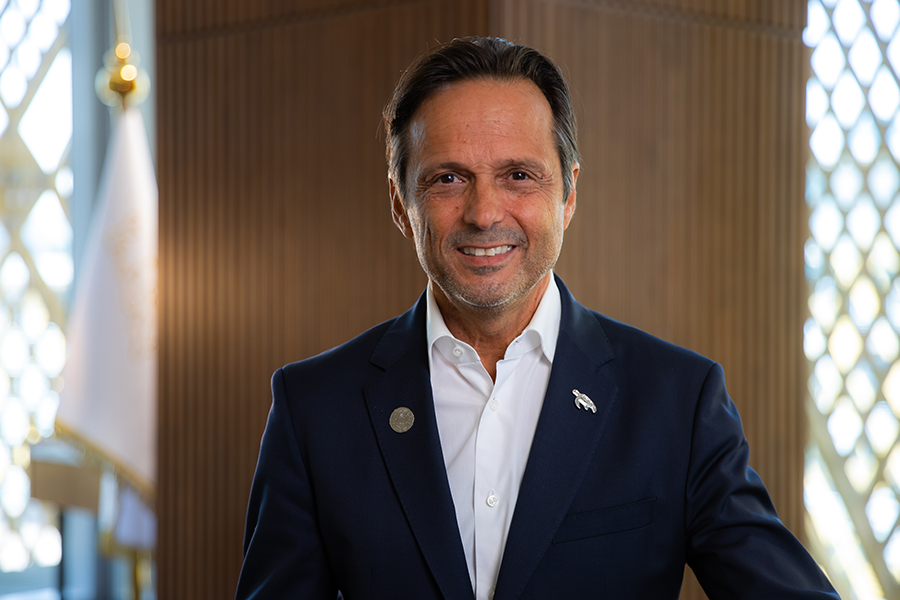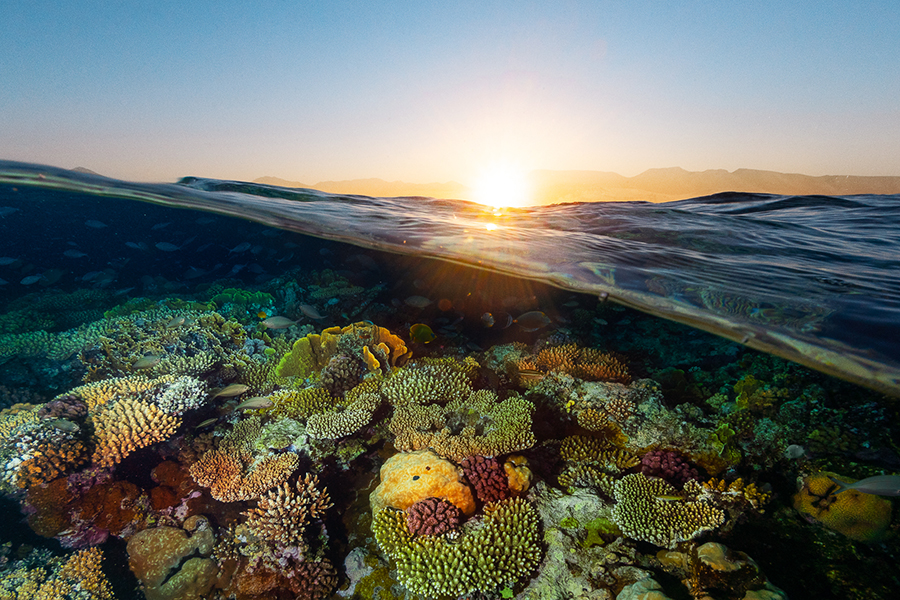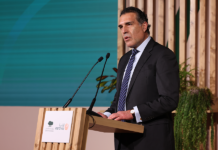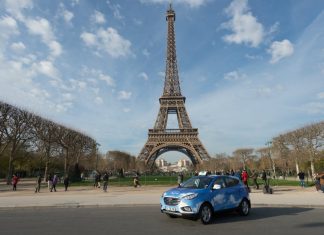
When travelers pass through the new international airport serving The Red Sea Project’s resorts in Saudi Arabia, they will soon realize that they have arrived at a very different kind of destination.
Eschewing the cavernous conventions and pomp of contemporary terminal buildings, the Red Sea International Airport has been designed by Foster and Partners to create the experience of a small, intimate, and completely sustainable space that is both luxurious and personalized.
Completely powered by renewable energy, with natural ventilation and even its own green oasis, the airport, opening as part of Phase One, will be the gateway to a new world of sustainable, responsible tourism across the enchanting islands, sweeping dunes and dramatic mountain landscape of Saudi Arabia’s Red Sea.
“We are not creating a typical airport, and we are not creating the typical resort,” says John Pagano, CEO of The Red Sea Development Company and its companion wellness destination further north along the coast, AMAALA. “Our destination is the pioneer in a new paradigm for tourism: regenerative tourism. We are doing much more than just protecting our precious natural resources such as coral reefs. We are using innovative technologies to restore and regenerate them.”
As part of this visionary project, The Red Sea Development Company is working with marine technology company Blue Planet Ecosystems (BPE) to enable the sustainable aquaculture production of fish fed by microalgae. The output will not only feed guests, but also help sequester carbon in this completely carbon-neutral destination.
Pagano has also teamed up with another innovation leader, Source Global, to produce renewable bottled water using solar technology that draws water vapor out of the air.
The introduction of these technologies in Saudi Arabia reflects Pagano’s passion for preserving the wonders of nature, supporting state-of-the-art innovations, and transforming luxury tourism into a force for good.
“Sustainable, regenerative tourism benefits all of us as human beings,” Pagano says. “We have one world, one planet we live on. We’ve taken it for granted for too long. It’s time to change course and make the world a better place.”
Visitors will get their first taste of this new world at the end of 2022, when The Red Sea Project’s first hotels open for business. The first phase of the project is on track to be completed in 2023, followed by the opening of AMAALA in 2024.
“Things are coming to life quickly in both destinations,” Pagano says. “The vision is becoming a reality.”
Q&A with John Pagano

Why do you think now is the right time for regenerative tourism?
We put sustainability and regeneration at the heart of everything we did because we identified that we needed to do things differently. Humanity’s actions are coming home to roost. Covid put everything into sharper focus. People are now more acutely aware of the planet, the environment, and ecology.
Sustainability is no longer enough because it is basically maintaining the status quo—but what are we doing to repair the damage and repair the issues we have already caused? We want to protect the world for our children, which means making the place better and reversing the damage. Ultimately, this is about our children’s future.
What do you think tourism demand will be like post-Covid?
What we stand for is going to resonate very well with the traveling public. There is so much pent-up demand. The market will come back stronger than ever because people have come to realize the value of travel since it’s been denied them for close to two years. Past dislocations have always come back stronger than they were before. The Red Sea Project and AMAALA have the perfect timing.
It would be foolish to be developing tourism offerings today and ignoring sustainability and the environment. Travelers want to go to places that are responsible, doing right by the environment, and taking care of the planet, the creatures, and people. If you don’t do it, you will fail, so do it and do it well because consumers are going to reward you for it.
What are you doing to protect and restore the environment?
The two resorts are planting a total of 25 million plants and trees. We are going to plant mangroves too, which are far better at capturing carbon than trees, serve as a habitat for marine life, and protect against sea level rise.

We have a thriving, unspoiled coral reef system, but we are not complacent. We are going to grow coral in the lab and export our knowledge of coral to the rest of the world. We may try to make growing corals part of the guest experience, so they can plant coral and come back in a year and see what happens. At the same time, we are trying to bring the desert wadis [valleys] back to life with a combination of a very limited amount of irrigation and control of grazing.
We are not going after mass tourism. We’re not going to overdevelop. Our total visitors will be capped at one million annually once we are fully operational in 2030. Most of the area of The Red Sea Project will be left untouched, including 75 percent of our islands because they are sensitive from an ecological point of view, for nesting turtles and birds for example.
How much support are you seeing from investors?
Investors support the regenerative tourism approach. The Red Sea Project signed the biggest Saudi riyal-denominated green loan facility ever—14.1 billion riyals or 3.76 billion dollars. It endorses what we are doing. The capital structure is in place. As we move along the timeline, and the airport is visibly being built and the utilities are contracted which also brought direct investment, investors are asking how to get involved. We are having discussions around investing in specific assets. The private sector believes in our vision.
What do these projects mean for the new Saudi Arabia?
It is going to help change the face of the Saudi economy. We are going to create 120,000 direct and indirect jobs with these two projects. This is a young country, with 65 percent of the population under 35. In a research project we delivered in 2020, over 90 percent of young Saudis were interested in a career in hospitality. We had 12,000 applications for 120 scholarships at the University of Prince Mugrin. The demand and the willingness to support these projects and Vision 2030 is most definitely present in young people.
When you engage with young Saudis, you find enthusiasm, passion, and belief in where the country is going. The transformation potential for the country is one of the most rewarding aspects of this job. It is incredibly exciting to see it come to life![]()






























